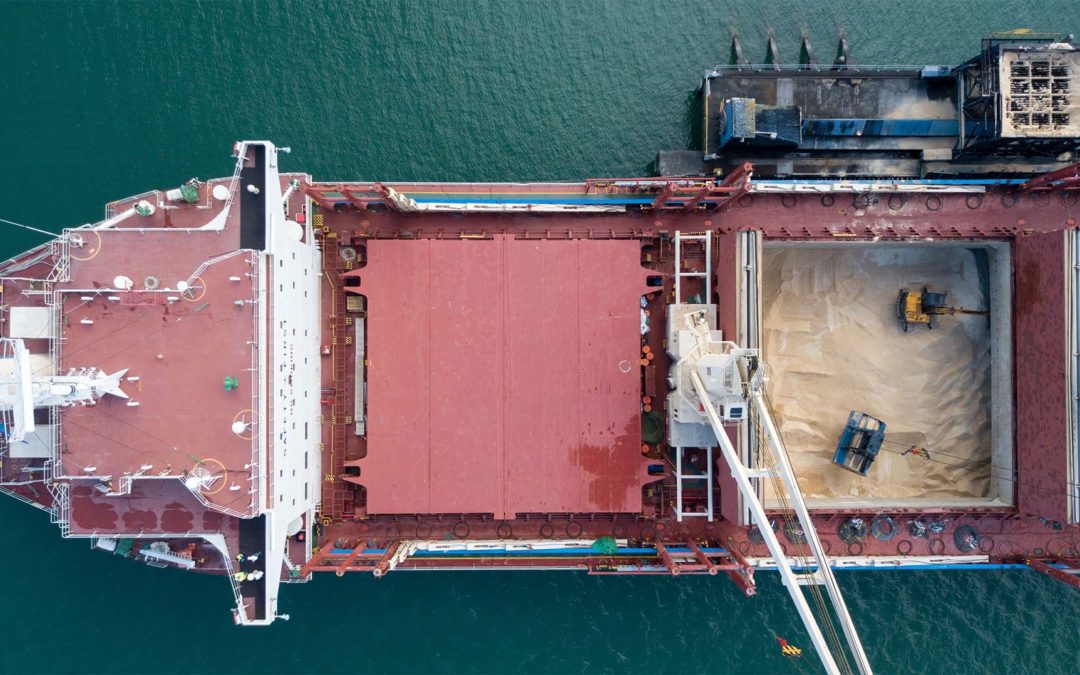As inventories and lead times increase, companies can leverage the power of transportation management systems to help them ride out the storm and prepare for the future.
Making sure inventory is in the right place at the right time and in the right condition has always been challenging, but the most recent supply chain disruptions, capacity constraints and labor shortages have made this task more difficult than ever. The fact that inventory is being held up on ships and at ports around the globe is putting a kink in even the best-laid inventory management approaches.
According to the most recent Logistics Managers’ Index (LMI), the accumulation of inventory throughout the supply chain—and not enough transportation capacity to turn it quickly—drove the metric up by 1.8 percentage points in January to 71.9 (a reading above 50% indicates expansion while a reading below 50% indicates contraction), FreightWaves reports.
“Because capacity is low and costs are high, it is difficult to move inventory efficiently,” Logistics Managers said in its report. “This combination of low capacity and high costs likely led to over-ordering this past Fall, and to goods idling at points in the supply chain where they could not be purchased by customers.”
Inventory Costs are Rising
The WSJ says inventory costs have been rising as shipping delays have tied up goods for longer stretches. The share of container ships arriving on time in 2021 was down to 35.8% from 78% in 2019, it reports, and ittook an average of 109 days to deliver a container from China to its final destination point in the US—up from between 40 and 60 days pre-pandemic.
“Billions of dollars of inventory is sitting on ships waiting at seaports and taking much longer to get to factories and stores as congestion at ports and in inland distribution networks slows the flow of goods,” WSJ reports. “Logistics experts say that is pushing buyers and suppliers to extend their payment terms and obtain new financing that expands the cost of carrying inventory.”
Delays like this are impacting a wide range of products. The Covid pandemic has strained global supply chains, causing freight backlogs that have driven up costs. “Now, companies are looking for longer-term solutions to prepare for future supply-chain crises,” WSJ adds, “even if those strategies come at a high cost.”
Managing Through Disruption
Companies’ inventory management headaches have been well documented in the news headlines, and those organizations reliant on disparate technology systems, spreadsheets and manual processes found themselves in a particularly dire predicament. The right transportation management system (TMS) can help companies address this issue by keeping their entire supply chain running smoothly.
When that happens, companies can maintain leaner inventories while remaining confident that the goods will be there when they need them. This directly impacts warehouse efficiency, helps reduce order lead times, and eliminates the need for additional storage space (i.e., less safety stock equates to less goods to store on site). TMS also helps improve productivity, allows companies to ship orders faster and provides high levels of visibility across the end-to-end supply chain.
Technology: The Great Enabler
Technology as a whole is helping companies address their inventory management issues and be better prepared for what’s coming next, versus just reacting to problems as they surface. “No longer can companies rely primarily on historical data and formulas to accurately forecast inventory,” ARC Advisory Group’s Steve Banker told Inbound Logistics.
Smart companies are also evaluating stock levels across their entire networks, rather than on a site-by-site basis. And, they’re using more technology to gain control and visibility over their supply chain activities in the midst of the current uncertainty.
“Companies that made use of planning systems combined with demand sensing—the use of multiple, real-time signals, like sales in a particular store or shipments from a retailer’s warehouses to their stores and machine learning,” Banker continued, “had significantly fewer errors in forecasting during the early days of Covid.”
.jpg)
IntelliTrans’ Global Control Tower provides high levels of supply chain transparency; aggregates, completes, and enhances data from a variety of sources; offers visibility into and execution of different aspects of the supply chain; and generates data-driven alerts and analytics that ask deeper questions and deliver meaningful insights.
By leveraging tracking information, the Global Control Tower provides analytics that measures key performance indicators (KPIs) like fleet cycle time, origin/destination dwell time, lane and hauler performance, back orders, freight spend, load optimization, and more. With their rate, equipment, lease, tracking, and invoice data in a central repository that’s accessible 24/7, companies can position themselves for success in any market conditions.

